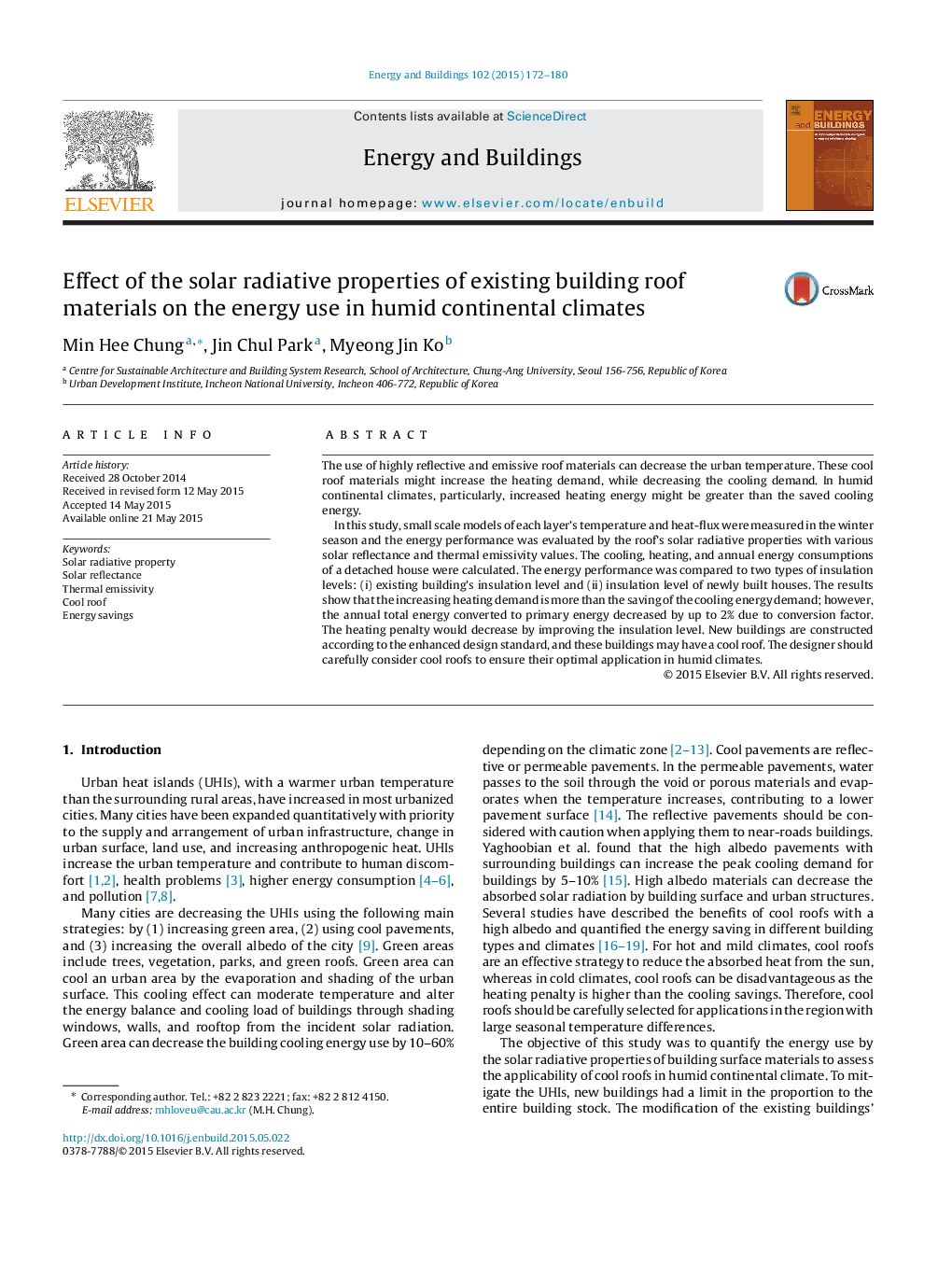| کد مقاله | کد نشریه | سال انتشار | مقاله انگلیسی | نسخه تمام متن |
|---|---|---|---|---|
| 262531 | 504036 | 2015 | 9 صفحه PDF | دانلود رایگان |
• This study conducted an energy performance evaluation by the roof's solar radiative properties.
• In the humid continental climate, the heating penalty is an important consideration.
• The annual energy consumption decreased up to 2% compared to the present level of SR and TE.
• An improved insulated house reduces the heating penalty 3.72 kW h/m2 of the total energy consumption.
The use of highly reflective and emissive roof materials can decrease the urban temperature. These cool roof materials might increase the heating demand, while decreasing the cooling demand. In humid continental climates, particularly, increased heating energy might be greater than the saved cooling energy.In this study, small scale models of each layer's temperature and heat-flux were measured in the winter season and the energy performance was evaluated by the roof's solar radiative properties with various solar reflectance and thermal emissivity values. The cooling, heating, and annual energy consumptions of a detached house were calculated. The energy performance was compared to two types of insulation levels: (i) existing building's insulation level and (ii) insulation level of newly built houses. The results show that the increasing heating demand is more than the saving of the cooling energy demand; however, the annual total energy converted to primary energy decreased by up to 2% due to conversion factor. The heating penalty would decrease by improving the insulation level. New buildings are constructed according to the enhanced design standard, and these buildings may have a cool roof. The designer should carefully consider cool roofs to ensure their optimal application in humid climates.
Journal: Energy and Buildings - Volume 102, 1 September 2015, Pages 172–180
